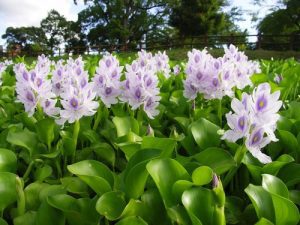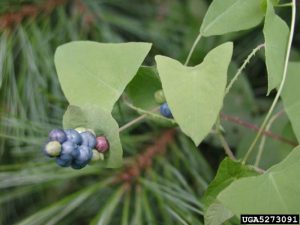
Early Detection Priority – Water Hyacinth (Eichhornia crassipes).
Early detection is an essential component of all successful invasive species management strategies. As part of our ongoing efforts to improve invasive species management efforts, the WNY PRISM Crew performed early detection site monitoring for the first time during the 2016 summer season!
Based on the Early Detection Priority Species List developed last Fall in cooperation with WNY PRISM Partners, 12 sites were identified for us to head out to survey and monitor. Each site had an early detection priority species observation confirmed within iMapInvasives online database. Species included water hyacinth (Eichhornia crassipes), water lettuce (Pistia stratoites), Japanese stiltgrass (Microstegium vimineum), and slender false brome (Brachypodium slyvanticum).
Water hyacinth had been observed in both Niagara and Erie Counties in 2014 and 2015. At the time of observation GPS points had been taken and all plants removed. When we surveyed these locations from land, we were unable to find any plants, even after searching throughout the general area. Two of the points were blocked by private property, making a thorough search more difficult. However, we are confident no water hyacinth survived the removal from previous years, and we look forward to surveying from the water next year.
An observation for water lettuce was added to iMapInvasives in 2011 and while removal records were not included in the observation, we were unable to find any water lettuce in the area of the GPS points provided. We were equally unsuccessful in finding any Japanese stiltgrass at the location where it had been observed back in 2005. This is actually the second year WNY PRISM has surveyed this location without finding any Japanese stiltgrass.

Early Detection Priority – Mile-a-Minute Vine (Persicaria perfoliata). Photo by Leslie J. Mehrhoff, University of Connecticut, Bugwood.org
Unfortunately, we didn’t have the same luck with the slender false brome locations. The previous species were found very early in their infestations allowing for effective manual removal. These species are also familiar to most site managers in the region allowing for quick assessments and management implementation. Slender false brome was not familiar to WNY when it was first found in Genesee County years ago. At the time, the only other infestations of this invasive species were known from the Pacific Northwest. Since the time it was first discovered a lot of effort has been put into understanding this species, how it spreads and how to manage it. WNY PRISM is looking forward to working with Partners to manage this species!
Everyone can help with the early detection of invasive species in WNY – check out our new Early Detection Reporting Protocol and learn how to identify our early detection priorities from our invasive species profiles.
This article was written by Tyler Christensen, 2016 WNY PRISM Invasive Species Management Assistant.


